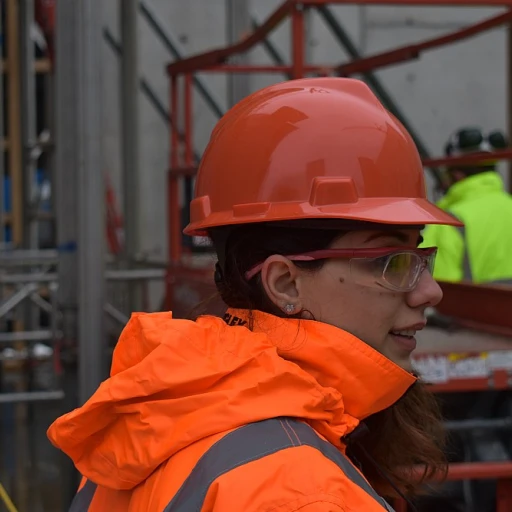
Understanding the Importance of Standardized Interviews
The Significance of Consistency in Interviews
In the talent acquisition landscape, standardized interviews have emerged as a pivotal component in streamlining hiring processes. This structured approach ensures consistency across the board, allowing organizations to minimize the inherent bias seen in more unstructured interviews.
By standardizing interview questions and responses, companies create a level playing field for all candidates. It removes subjective elements that can creep into the interview process, thus reducing the impact of unconscious bias among hiring managers and interviewers. This approach is not only about asking the same assessment questions but also ensuring each candidate experience is uniformly evaluated based on predefined criteria.
Standardized interviews pave the way for more reliable hiring decisions by focusing on skills and potential rather than personal feeling or gut instincts. This method leads to better hiring outcomes, as decisions are based on data and structured evaluations.
Moreover, incorporating elements such as video interviews can further enhance the hiring process, allowing companies to maintain structure while leveraging technology. To fully understand the effectiveness of these techniques, it's crucial to explore methodologies such as scheduling strategies.
Designing a Standardized Interview Framework
Creating a Consistent Interview Framework
To create a robust interview process, it's crucial to design a structured interview framework that consistently evaluates candidates across similar roles. A structured interview framework ensures that every candidate passes through the same set of standardized questions, which aids in creating a level playing field during the selection process. Here’s how you can design an effective standardized interview:- Defining Job-relevant Questions: Begin by crafting questions that are closely aligned with the specific skills and competencies necessary for the job. This approach helps interviewers focus on the candidate's experience and qualifications that are pertinent to the role, subsequently improving the decision-making process.
- Score Sheets for Structured Interviews: Utilize score sheets to rate candidate responses based on a predefined scoring system. This method assists in maintaining objectivity by evaluating each candidate using the same criteria and reducing unconscious bias, a common problem in unstructured interviews.
- Developing Diverse Question Types: Incorporate a mixture of behavioral and situational questions to get a comprehensive understanding of the candidate's capabilities. For instance, ask about past experiences and how they would handle hypothetical scenarios. This provides insights into both past performance and future potential.
- Aligning with Company Values: Craft questions that reflect the company’s values and culture. This alignment helps assess whether candidates share the organization's core philosophies, which can greatly impact their job satisfaction and performance.
Training Interviewers for Consistency
Ensuring Consistency Through Effective Training
To effectively implement standardized interviews, one critical component is training interviewers to maintain consistency throughout the entire process. Structured interviewing minimizes unconscious bias and enhances the candidate experience. It's essential for interviewers to understand best practices thoroughly to reduce unwarranted variations. Develop comprehensive training programs that focus on the structured interview process. This includes familiarizing hiring managers and team members with the interview framework, the reasoning behind structured interviews, and how they can significantly influence hiring decisions. During training, it's important to highlight the difference between structured and unstructured interview formats, emphasizing the structured approach's effectiveness in talent acquisition. The Key Elements of Training Interviewers:- Understanding Bias: Train interviewers to be aware of biases that might affect their decision-making. Educate them on how structured interviews, compared to unstructured interviews, can aid in reducing bias and improve the reliability of candidate assessment.
- Framework Familiarity: Ensure that your interviewers are well-versed in the detailed framework of the standardized interview. It's crucial they are comfortable with the structured format and prepared with tailored interview questions that focus on the job’s required skills.
- Practice and Feedback: Offer opportunities for interviewers to practice their skills. Use role-playing exercises or video interviews to simulate real scenarios. Provide constructive feedback to refine their questioning techniques and overall approach.
Balancing Standardization with Flexibility
Ensuring Consistency While Embracing Flexibility
Implementing standardized interviews into the hiring process doesn't necessarily mean eliminating all elements of flexibility. While a structured interview framework provides a solid base, it’s important to strike a balance that maximizes the experiences of both candidates and interviewers. This involves designing your framework in a manner that standardizes key components, such as essential interview questions and assessment methods, while allowing room for personalized interaction.
To maintain consistency in the interview process, hiring managers must be well-equipped with the best practices of structured interviews. This includes designing interviews that focus on job-specific skills and behavioral aspects, which are critical in predicting candidate success. These elements contribute significantly to objective hiring decisions and reducing bias.
However, it's equally crucial to adapt to the unique context of each conversation. Some interviews may require follow-up or situational questions based on candidate responses. This flexibility can optimize the assessment process by tailoring the interview without deviating from its core standardized structure.
Standardization primarily aims at reducing unconscious bias, yet the human element of interviewing, such as empathy and understanding, must not be disregarded. This balance ensures that structured interviews remain an effective tool in evaluating potential hires while enhancing the candidate experience overall.
For effective implementation, consider involving team members in refining structured interviewing methods. Multiple perspectives can enhance the interview framework, ensuring it's comprehensive and inclusive. By aligning structured processes with individual nuances, companies can create a more equitable and rewarding hiring process.









